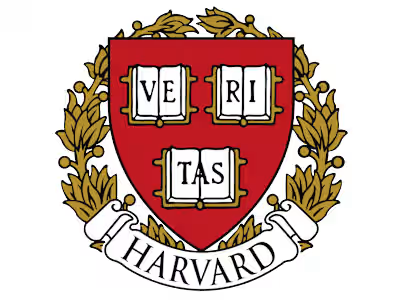Creative Cross-Border Research Solves a 100-Year-Old Mystery
PROBLEM
Many are the mysteries I’ve solved over the years, using a variety of creative research techniques and methods. My “toolbox” has been enhanced by my experience in multiple domains: as a journalist/investigative reporter, a graduate-level researcher/author and a freelance writer/consultant in private practice. Though I typically apply my professional skills for the purpose of assisting clients, I leveraged them for myself on one recent occasion, for a research project that turned out to be especially memorable.
A copy of a Russian-language book that my maternal grandfather wrote and published in Lithuania in 1921, A History of Lithuania, had been handed down through my parents to me. It’s my understanding that the book earned a place in the United Nations library in New York for its significance as the first Russian-language popular history of the country. It was written as a kind of “Lithuanian history for dummies,” to encourage ordinary (non-academic) Russian-speaking inhabitants of Lithuania to take an interest in and learn about local history. (My grandfather, Joseph A. Katzel, had fled to Lithuania following the Russian Revolution of 1917, along with many others.)
In 2021, as a kind of “pandemic project,” I produced a centennial edition English translation with an introduction added by me. Reading through the original manuscript, I noticed that the surviving tome was actually the first of a two-volume set, with the clear implication that the second volume had been written and was soon to be published. The mystery in this case was: Why is there no evidence of the publication of that second volume? What happened to it? This was certainly something that deserved to be addressed in my introduction to the centennial edition, so I folded the question into my research and exploration of other issues relating to the publication.
SOLUTION
One of the skillsets I cultivated as a reporter could be described as “digging and sleuthing.” This refers to the process of extracting information that has yet to be discovered, through a variety of means. One of these involves searching through records, while another major category involves contacting people (“sources”) to interview, sometimes orally and sometimes in writing (e.g., via email). In either case, the key is to cast a wide net, as typically only a fraction of efforts at discovery bears fruit. In this way, the endeavor shares a certain similarity to the “numbers game” principle inherent in sales. Just as a salesperson must typically hit on a large number of prospective buyers in order to make an actual sale, a researcher/investigator must typically search for information in many places before “scoring” the “straight dope” (full story).
It’s not just a matter of pulling out and utilizing the items in the toolbox referred to above. It’s a matter of using them creatively and intelligently — in other words, really thinking things through. In the preface to his 1921 book, my grandfather thanked the founder of the Lithuanian National Library for serving as a source in the preparation of his manuscript. He also mentioned by name a particular librarian there whom he identified as especially helpful. This gave me the idea to reach out to the current National Library, to see whether I could cultivate a knowledgeable source who might be willing to answer my questions.
My first attempts to use the web form on the library site were unsuccessful because the form was not working as it was supposed to. I kept trying, though, and eventually made contact with an extremely helpful librarian named Zina Daugėlaitė, to whom I will always be grateful. Despite the physical, cultural and linguistic gaps that separated us — in addition to not knowing me from Adam — Zina good-naturedly entertained my questions. She told me that the library had a copy of my grandfather’s book but only the first volume. After I told her that I was puzzled as to why second volume had never been published, she referred me to a review of volume one that was written by a well-known and influential individual named Augustinas Voldemaras (1883–1942), which I could find in the library’s database.
RESULT
The wonders of modern technology enabled me to first convert the characters in the page images to text-document form, which I could then copy and paste into the box at translate.google.com for an instant translation into English from the original Lithuanian (I later had a careful translation done by a professional translator). As soon as I read the rough translation, the dots immediately connected themselves and I understood what had happened.
To make a long story short, Voldemaras was a nationalist political figure, an admirer of Adolf Hitler, who viscerally condemned my grandfather’s book in the most strident terms. He didn’t like the fact that an outsider — a Jew, at that — was writing about Lithuanian history, thereby exercising a form of ownership over it. When Voldemaras came to power as a dictator through a coup in 1926, he used his authority to expel my grandfather and his family from Lithuania, under the pretext that they had been discovered to be Russian spies. (In the interest of brevity, I won’t go into the details, which are available in my introduction to the book on Amazon, available as a free download.)
In August 1921, when that scathing review came out, Voldemaras was out of power politically but still important and influential enough for his fierce disapproval of a book to give pause to the decision to publish any subsequent volume. In all likelihood, it was the author himself who came to the conclusion that under the circumstances, the most prudent course of action would be to voluntarily refrain from publishing the second volume (i.e., self-censorship). And so it was that the mystery of the missing history book was solved.
In this way, in addition to the creative application of the items in my toolbox, what ultimately enabled me to solve the “mystery of the missing history” was my powers of persuasion. THE SAME GUIDING PRINCIPLE PROBABLY APPLIES TO WHATEVER PROJECT YOU MAY HAVE IN MIND AT THIS TIME: Regardless of the nature of the project, success will hinge upon effective messaging — PERSUASION of your audience, in other words, into believing what you are telling them (and the sense that you firmly believe in it yourself). That’s the name of the game. It’s what I do and why they pay me the big bucks, so to speak.
Like this project
Posted Mar 19, 2024
A unique combination of research skills was applied to figure out why a Lithuanian dictator effectively banned a book written by my grandfather a century ago.
Likes
0
Views
3







